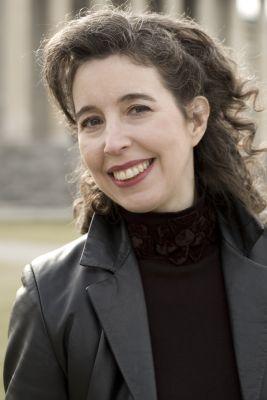Hewitt’s Bach, unsurprisingly, provides the highlights in mixed recital

Perhaps no major pianist before the public today is more associated with the music of Johann Sebastian Bach than Angela Hewitt. Hewitt not only spent a decade carefully recording all of the solo keyboard works of Bach, but has given memorable all-Bach recitals across the globe.
Thus, it was a bit surprising to see that Hewitt’s Sunday afternoon recital at Symphony Center consisted not only of Bach, of course, but was juxtaposed with Debussy and Ravel.
The Serabande of Debussy’s Pour le piano seemed perfectly tailored for Hewitt, her gentle touch bringing out the delicate transparency of the music and the middle section build-up was brought off with aplomb. More problematic was the fitful overplaying that tended to dominate the climactic portions of the Prelude and Toccata, although the opening section of the latter, like the Serabande, was also a comfortable fit.
True, Hewitt’s performance certainly brought out in sharp relief—perhaps too sharp—just how much Baroque forms were a springboard for Debussy in composing these pieces. And yet, as every discernible pulse and angular phrase went by, it seemed increasingly clear that the forms in this case were only a means to a larger end being missed, not an end in themselves. The pieces seemed to crave for more freedom and illumination than they were being allowed to have.
The same peculiarities were even more apparent in Ravel’s Le tombeau de Couperin, which came across, by and large, as static and stiff. Despite the title and the fact that these six pieces are each memorial pieces to friends Ravel lost during World War I, these are nonetheless playful and life-affirming vignettes that all too often, were made into somber abstractions.
Bach made up the rest of the program, including two French Suites, No. 6 in E Major, BWV 817 and No. 5 in G Major, BWV 816. These were played, as is Hewitt’s custom, with all of the repeats observed and with enormous freedom, ironically the very quality so lacking in the Debussy and Ravel portions.
There was a lightness of touch, liveliness and sense of elegance and occasion to each suite, some of the middle movements characterized by slow and introspective readings and the concluding gigue sections given lots of rubato and spirit.
These are lighter Bach fare, so it fell to the Toccata in D Major, BWV 912, to be the tour de force Bach portion of the program and Hewitt did not disappoint, particularly in the virtuosic fugue that closes the work.
The single encore was Debussy’s Clair de lune movement of Suite bergamasque which was surprisingly the most effective Impressionistic performance of the afternoon, Hewitt’s delicate touch weaving an effective and ethereal nocturnal tapestry.
Posted in Uncategorized


